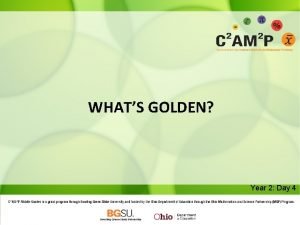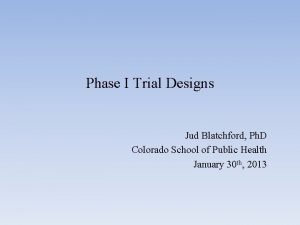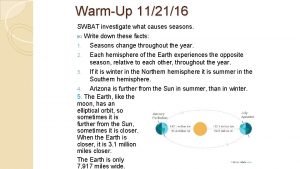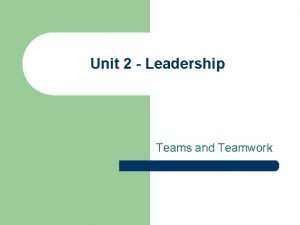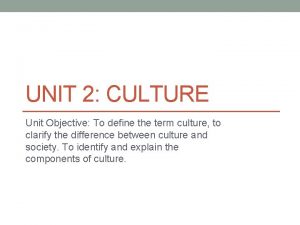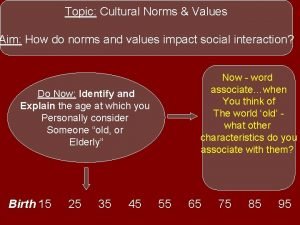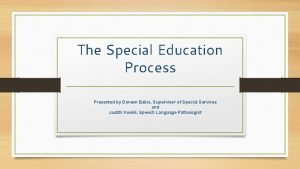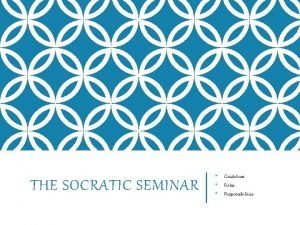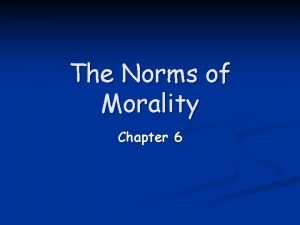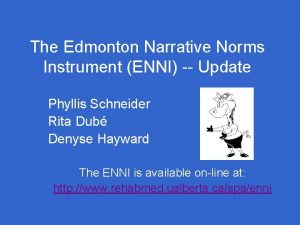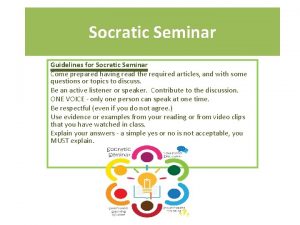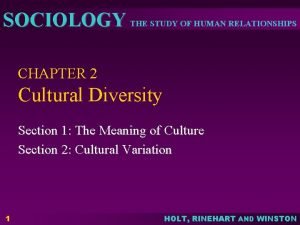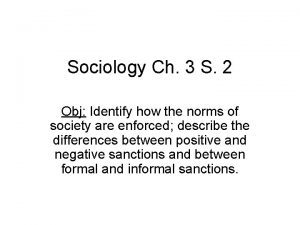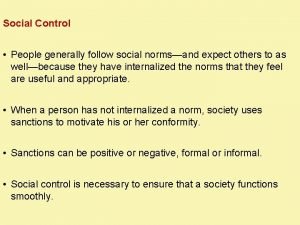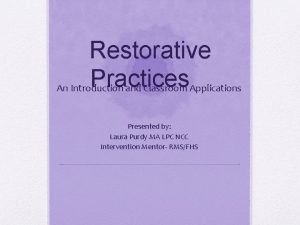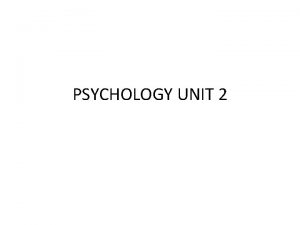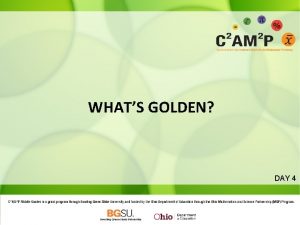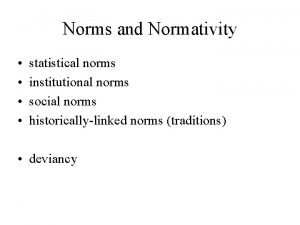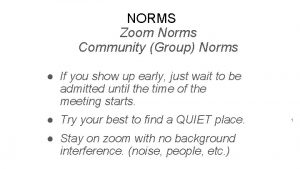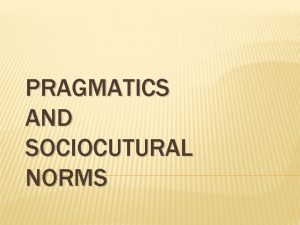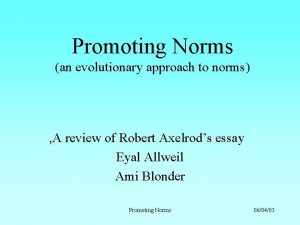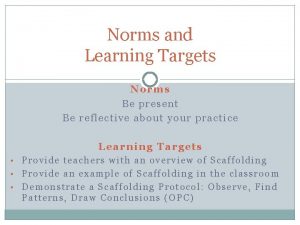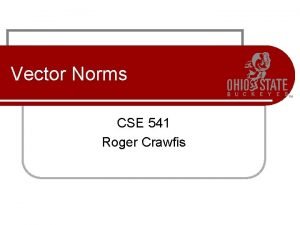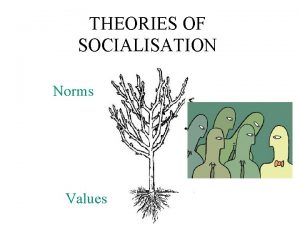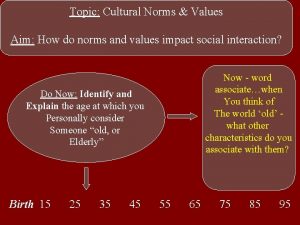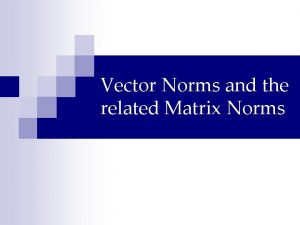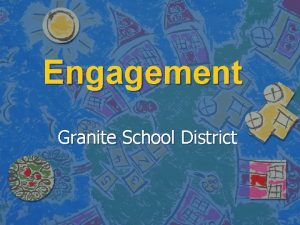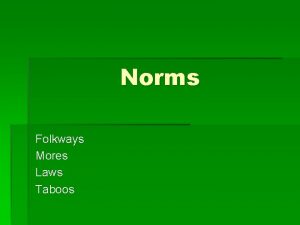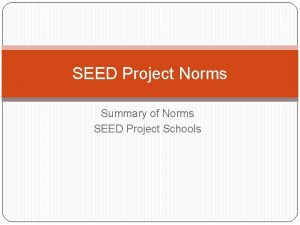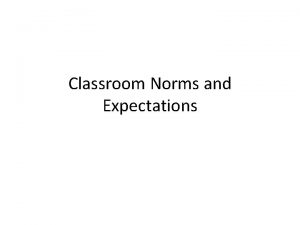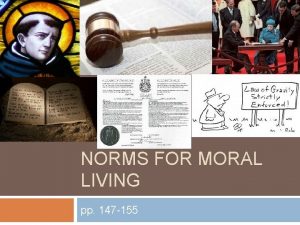WHATS GOLDEN Year 2 Day 4 Agenda Norms









































- Slides: 41

WHAT’S GOLDEN? Year 2: Day 4

Agenda • • • • Norms Morning Jumpstart: Dr. Bostic says… Focal SMP – SMP 6: Attend to precision Activity – Transformations with scale-up to technology Lesson Reflection: Reflecting on SMCs and SMPs (inc. SMP 6) Lunch (Half-hour) Launch after Lunch: Dr. Bostic says…again Round 1 of lesson UDLing by groups Reflecting on how students might be tripped up after the lesson with brief presentation by Brooks on multiple means of representation and language (form, function, and syntax) Round 2 of UDLing by groups Reminder about NWO STEM TEACHING SYMPOSIUM Synthesizing from day Daily Evaluation

Evolving Norms for this PD • We will be ready for class and use our class time effectively. • We will keep our focus on learning and use technology for personal reasons during breaks. • We will be respectful of each other’s time and space and work efficiently. • We will actively participate by (a) listening to each other, (b) giving others our attention, (c) not speaking when someone else is talking, and (d) regularly sharing our ideas in class. • If we disagree with someone or are unclear, we will ask a question about his or her idea and describe why we disagree or are confused. • We will ask questions when we do not understand something. We will comment on others’ ideas rather than the person.

Evolving Norms for this PD • We will take advantage of opportunities to share ideas and gather feedback through presentations. • We will encourage one another to share ideas. • We will show our appreciation to one another for their ideas. • If we disagree with someone or are unclear about their ideas related to mathematics content and pedagogy, we will ask a question about his or her idea and describe why we disagree or are confused. • We will ask questions when we do not understand something about mathematics content and pedagogy. • We will comment on others’ ideas about mathematics content and pedagogy rather than the person.

Evolving Norms for this PD • We will always look for another approach to solve problems. • We will use pictures, graphs, tables, symbols, numbers, manipulatives, and/or words to assist us while doing mathematics. • We will persist with every problem and examine it from multiple perspectives. • We will be mathematically precise whenever possible. • We will explain and justify our ideas in a way that everyone can understand.

Dr. Bostic Says

Standard for Mathematical Practice #6: Attend to precision

Rigid Transformations

Reflecting on SMCs and SMPs • Share across your table with different SMPs and SMCs addressed by today’s activities. – Our focal SMP was SMP 6: Attend to precision. – Be purposeful indicating what specific behaviors or habits led you to conclude that you engaged in a specific SMP. – Similarly, what did the instructor(s) do to encourage/foster/facilitate that SMP?

LUNCH

Someone else says

Explicit Instruction for Mathematics Vocabulary Brooks R. Vostal, Ph. D. Bowling Green State University Wednesday, November 11, 2015

Review of explicit instruction • Targeted–often short–presentations • Series of scaffolds • Clear statements about purpose and rationale • Clear explanations and demonstrations • Opportunities for supported practice with feedback • Prepares students for Independent Tasks • Not just homework • Independent Tasks include all activities in which you are NOT checking accuracy one problem/question/etc. at a time

Characteristics of Effective Vocabulary Instruction • More than copying words and looking up definitions • Unambiguous and contextual • Multiple exposures • Active engagement

Explicit Vocabulary Instructional Routine 1. Introduce the word and enter in Vocabulary Log 2. Introduce the meaning of the word • Student-friendly explanation • Determine critical attributes 3. Illustrate with examples 4. Verify students’ understanding • Students distinguish between examples and nonexamples • Students generate examples • Students show they know how to use the word

STEP 1: INTRODUCE THE WORD AND ENTER IN VOCABULARY LOG

Vocabulary Logs • One place (section of binder, etc. ) where all vocabulary is recorded • No single format is required • Target word and meaning • Word parts, synonyms, antonyms, etc. • Examples and Non-examples • Logographs (pictures) • Original sentence(s)

Four-Column Organizer for Word Mastery (Leno & Dougherty, 2007) Word Definition malleable Capable of being pounded or rolled into thin sheets without shattering brittle Likely to shatter or break into pieces when pounded electrical conductor Matter that allows electricity to flow through it easily insulator Matter that does not allow electricity to pass through easily luster The way matter reflects light from its surface. Can be shiny or dull. Connect Visual

Vocabulary Log based on Frayer Model Your Definition Your picture Could happen, but unlikely New Word improbable Winning the lottery Walking on moon Graduating from H. S. Getting a job I love Examples Non-examples

STEP 2: INTRODUCE THE MEANING OF THE WORD

Student-friendly explanations 1. Contain known words 2. Indicate how word is used • Attention • Non-Example: (1) The act or state of attending through applying the mind to an object of sense or thought. (2) A condition of readiness for such attention involving a selective narrowing of consciousness and receptivity. • EXAMPLE: When you give something your attention, you look or listen carefully

Determining Critical Attributes • Look at definition with students • Break definition into critical attributes • Usually you give them, but may ask for input • Record the word and critical attributes in a log • Perimeter–the measurement of the distance around a shape or object 1. Measurement 2. Of distance 3. Around a shape or object

STEPS 3 & 4: ILLUSTRATING/VERIFYING WITH EXAMPLES & NON-EXAMPLES

Distinguish between examples and non-examples • Most efficient way is to use choral responses • Teacher gives an example, and says, “Is this an example of the word, yes or no? ” • Students orally respond as a group • Teacher gives a non-example, and says “Is this an example, yes or no? ” • Students respond orally as a group

Examples/Non-examples (Beck, Mc. Keown, & Kucan, 2008) • Students determine if statements represent example of target word and explain choice to a partner. • Materials • Teacher-generated example statements • Sample variation 1 • “If I say something that sounds precarious, say “precarious” when I give the signal. If not, don’t say anything. ” • “Walking over a rickety bridge that goes over a deep canyon. ” Students respond chorally • “Now, 1 s tell 2 s why that statement showed precarious” Partners explain, and teacher calls on one person to report out.

Examples/Non-examples (Beck, Mc. Keown, & Kucan, 2008) • Sample variation 2 • “ 2 s tell 1 s which would make you scream frantically: a kitten purring or a rattlesnake rattling? Partners respond and explain; teacher calls on a 1 to report out. • Sample variation 3 • “Would you want the people who cook the school lunch to be versatile or frugal? Everyone? ” Students respond chorally • “ 1 s tell 2 s why you want them to be versatile?

Students generate examples through Graphic Organizers • Concept of Definition Map

Students generate examples through Graphic Organizers Model Diagram

VOCABULARY EXTENSION ACTIVITIES

Dramatic Movement (adapted from Alber & Foil, 2003) • Kinesthetically “act out” the meaning of target words • Teacher-demonstrated or student-generated • Procedure 1. 2. 3. 4. Place target words in a hat/bow Student select word Act out (i. e. , pantomime) meaning Other students guess what is being acted out • Sample • “deciduous” • Student pantomimes being a tree with arms out, fingers spread. To show season change, sway back and forth, hands fluttering down to the floor. Then, stand tall with hands in fists.

Wordo (Rasinski, Padak, Newton, & Newton, 2007) • Vocabulary version of Bingo • Materials • List of 16 words • Wordo card for each student/pair • Procedure 1. Write words on board 2. Students may choose a FREE space on Wordo card, then write words randomly in remaining boxes 3. Call out clue for each word • student-friendly explanation, synonym or antonym, sentence with target word missing 4. Students mark answers on sheet with pens or removable pieces 5. Winner gets four in any directions, becomes caller for next round

Odd Word Out (Rasinski, Padak, Newton, & Newton, 2007) • Students select word that is dissimilar from group and explain why it doesn’t fit the group • Materials • Teacher-generated worksheet • Sample • A worksheet would include variations on this for all words being reviewed Odd Word Out Look at the four words. Write the word that doesn’t belong on the line. Then write how the other words are the same. premature premed premixed prenatal The word that doesn’t belong is _____. The other words are the same because __________________

Semantic Feature Analysis (Pittelman, Heimlich, Berglund, & French, 1991) • Link students knowledge with target words that are conceptually related • Materials • Matrix for each student with words from the reading/unit • Procedures 1. Project matrix with vertical list of target words down left side 2. Students suggest features to be written across top row • Teacher could have these filled out in advance 3. Students complete matrix with a symbol for features that apply to each word • Sample on next slide

SFA for ENERGY Uranium 235 Hydrogen Biomass Geothermal Hydroelectricity Wind energy Passive solar heat Active solar heat Oil Coal Natural gas Pollutant Conservable Manmade Naturally occurs Nuclear material Nonrenewable A = Always applies S = Sometimes applies N = Never applies Renewable (adapted from Richardson, Morgan, & Fleener, 2012)

SAFMEDS (Adapted from Graf, 2000) • S – Say • A – All • F – Fast • A–A • M – Minute • E – Each • D – Day • S – Shuffled SAFMEDS are like flashcards: • Text on both sides of card • Learner sees what is on front of card • Learners says what is on the back • Use frequently to improve both speed and accuracy

Technical suggestions for Creating SAFMEDS • Use 3 x 5 index cards OR smaller (e. g. , business card size) • Keep the text on the back/answer side very brief • (e. g. , one word, or even an abbreviation) • Make any blanks consistently the same length • (e. g. , 5 underscore characters: _____). • Put blanks toward the end of the text on the front side. • Avoid extensive wording on both fronts and backs.

SAFMEDS non-example Card Front of Card • The textbook by Heward indicates that ____ is a combination of speed and accuracy that characterizes competence perfromance. Back of card • Fluency

SAFMEDS example Card Front of Card • The combination of speed and accuracy is ____. Back of card • Fluency

Using SAFMEDS (Adapted from Eshleman, 2000) 1. Before starting, SHUFFLE the deck of cards 2. Feel free to STUDY cards before a timed session 3. Set timing sessions for 1 minute • You can time how long it takes to get through the entire deck, but repeatedly doing 1 -minute timings is standard 4. The learner holds the cards 5. Set a timer and begin 6. For each card, SEE what is on front of card, then SAY what is on back out loud before turning it over 7. Place correctly answered cards in one stack, errors in another 8. Chart the number correct per minute 9. In general, top performance equals 50 terms stated correct in a minute

Reflecting on UDL

Take Care • Please complete the exit ticket and place it on the parking lot. • Please throw away any trash and take your belongings. • See you November 21 at BGSU for the Symposium! • See you December 9 for CAMP! • Use Dr. Math to ask geometry questions (or have your students ask them!) The link is on the CAMP website.
 Day 1 day 2 day 3 day 4
Day 1 day 2 day 3 day 4 Whats a golden year
Whats a golden year Day 1 day 2 day 817
Day 1 day 2 day 817 Agenda sistemica y agenda institucional
Agenda sistemica y agenda institucional Golden ratio last supper
Golden ratio last supper Modified fibonacci sequence
Modified fibonacci sequence Leavers assembly poem
Leavers assembly poem Tara stiles reebok
Tara stiles reebok We waited all through the year
We waited all through the year Seasonal changes diagram
Seasonal changes diagram Family sis schoolmax
Family sis schoolmax Ocean apart day after day
Ocean apart day after day Day to day maintenance
Day to day maintenance Physical science chapter 6 review answers
Physical science chapter 6 review answers Tomorrow i don't know
Tomorrow i don't know Act 2 romeo and juliet timeline
Act 2 romeo and juliet timeline Growing day by day
Growing day by day Seed germination inhibitors examples
Seed germination inhibitors examples Seed germination conclusion
Seed germination conclusion Observation of plant growth day by day
Observation of plant growth day by day I live for jesus day after day
I live for jesus day after day Casting crowns glorious day (living he loved me)
Casting crowns glorious day (living he loved me) Day one day one noodle ss2
Day one day one noodle ss2 Day one day one ss2
Day one day one ss2 Whats hot whats not
Whats hot whats not Informal group norms
Informal group norms What is aimsweb
What is aimsweb Group cohesiveness and performance
Group cohesiveness and performance Mores example
Mores example Values vs norms
Values vs norms Iowa nebraska speech norms
Iowa nebraska speech norms Socratic seminar ground rules
Socratic seminar ground rules Proximate norm meaning
Proximate norm meaning Edmonton narrative norms instrument
Edmonton narrative norms instrument Socratic seminar norms
Socratic seminar norms Norms sociology examples
Norms sociology examples Not everyone internalizes all of society's norms
Not everyone internalizes all of society's norms Enforcing norms through either internal or external means
Enforcing norms through either internal or external means Affective statements examples
Affective statements examples Deviation from social norms
Deviation from social norms 7 norms of collaboration
7 norms of collaboration How to interpret aimsweb scores
How to interpret aimsweb scores

